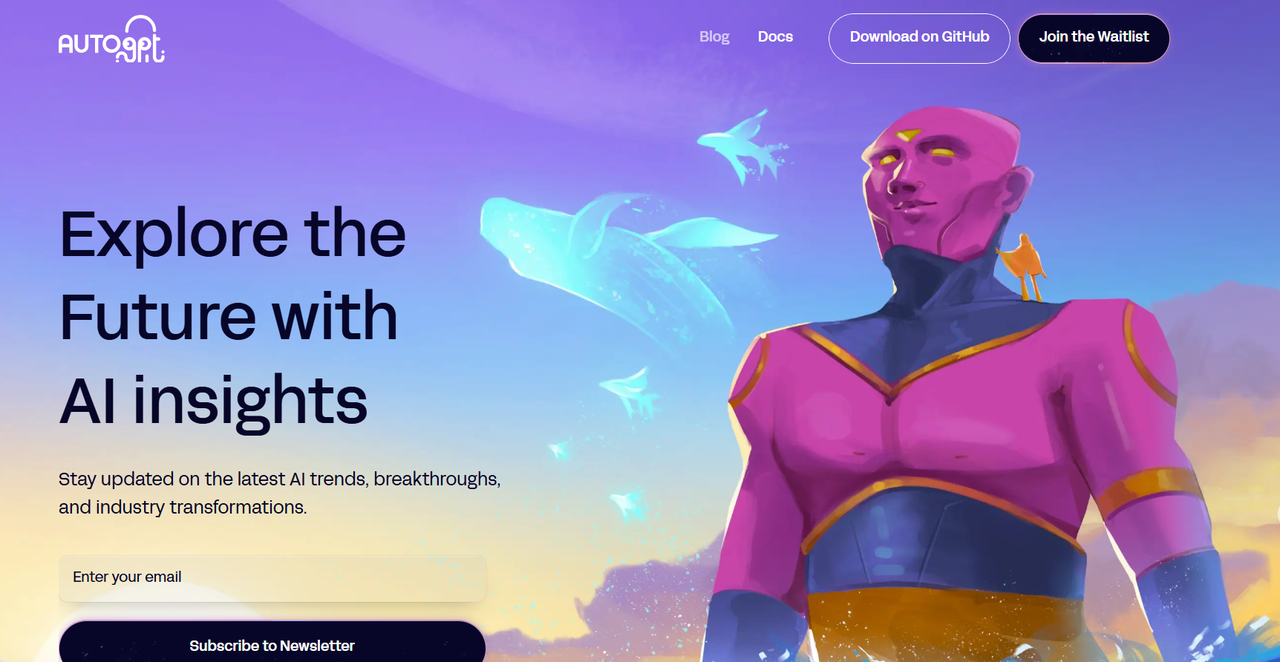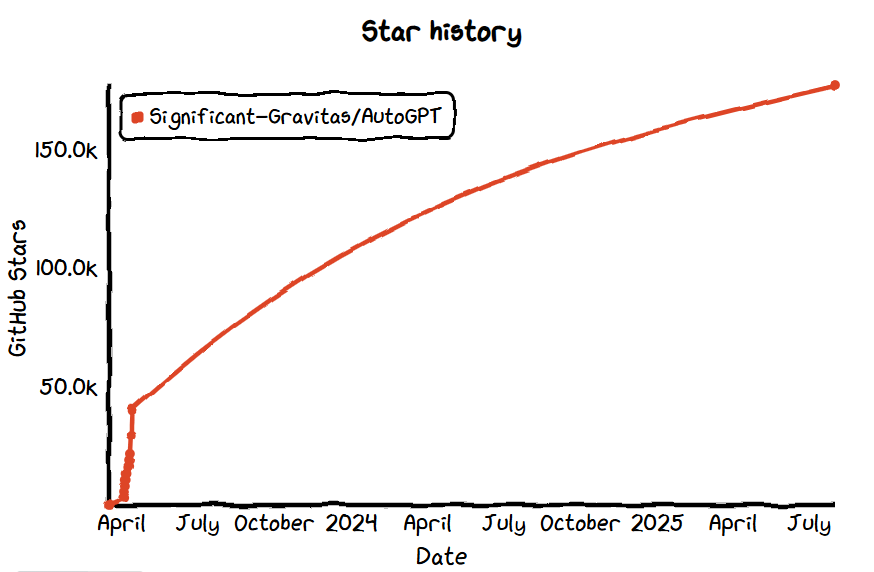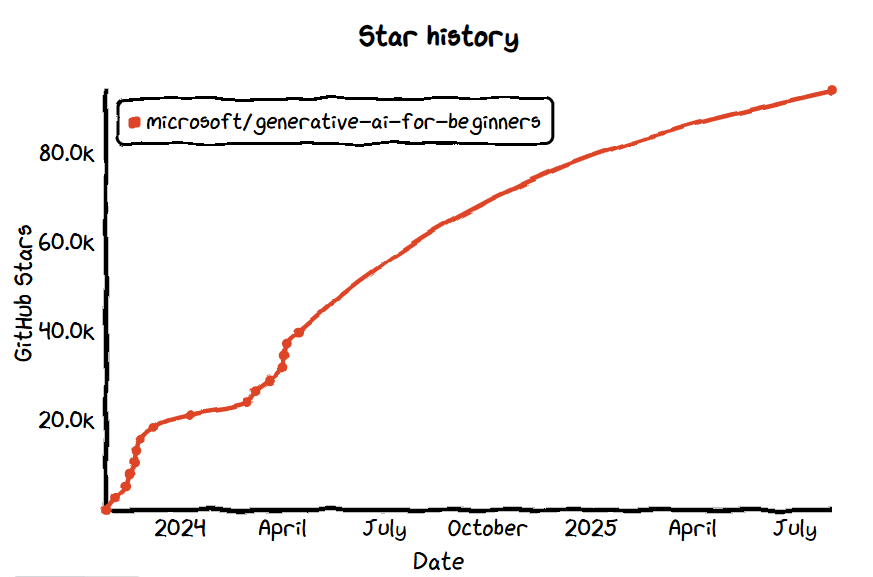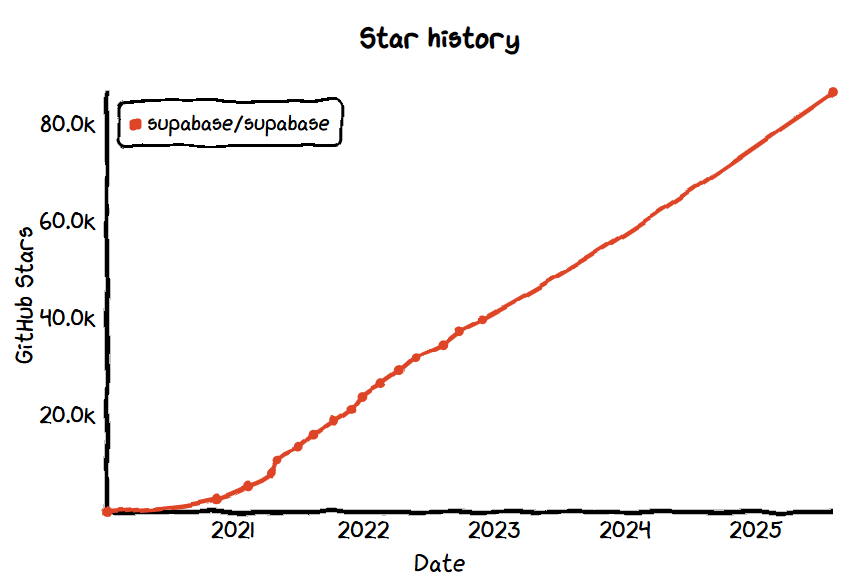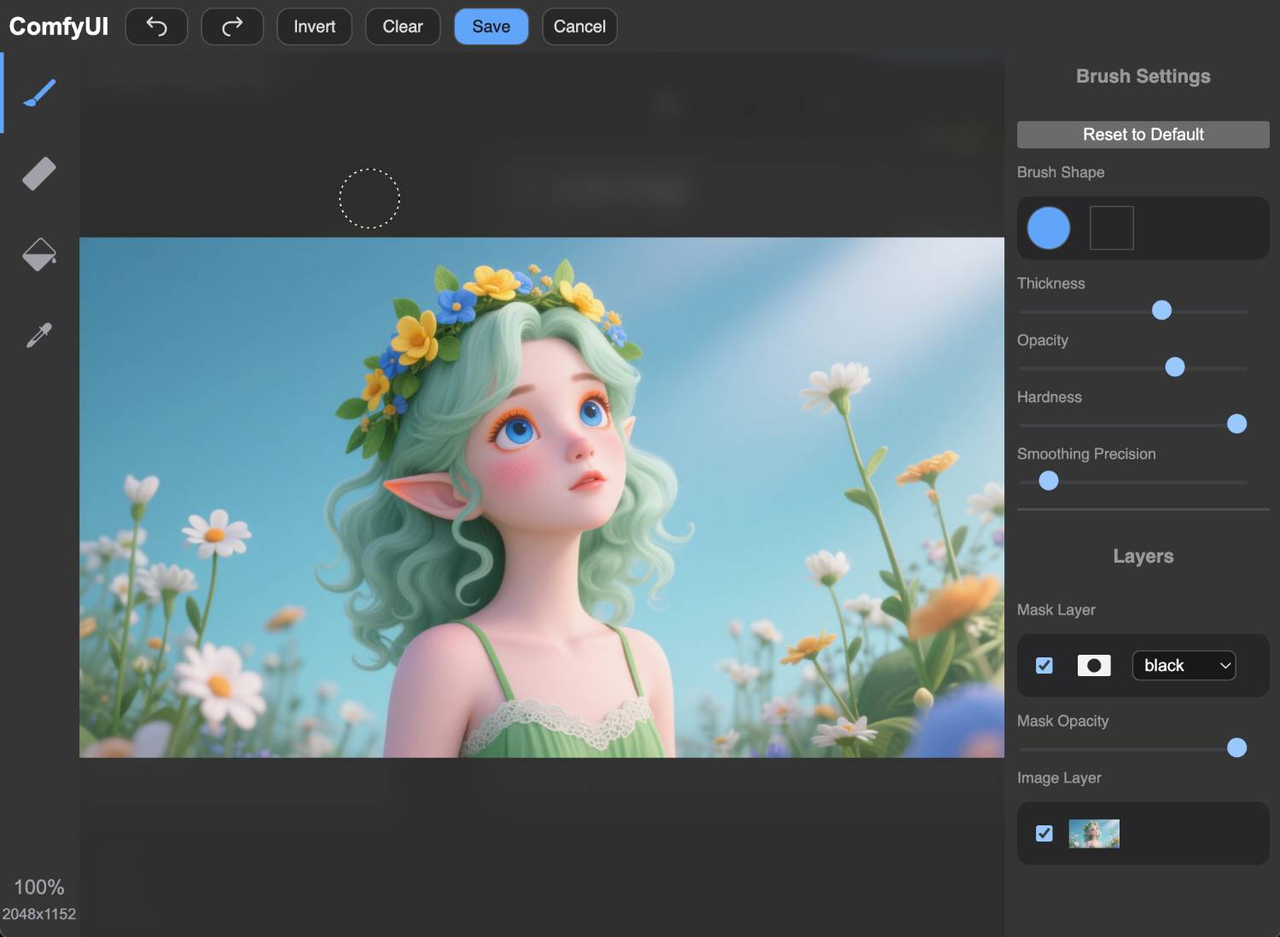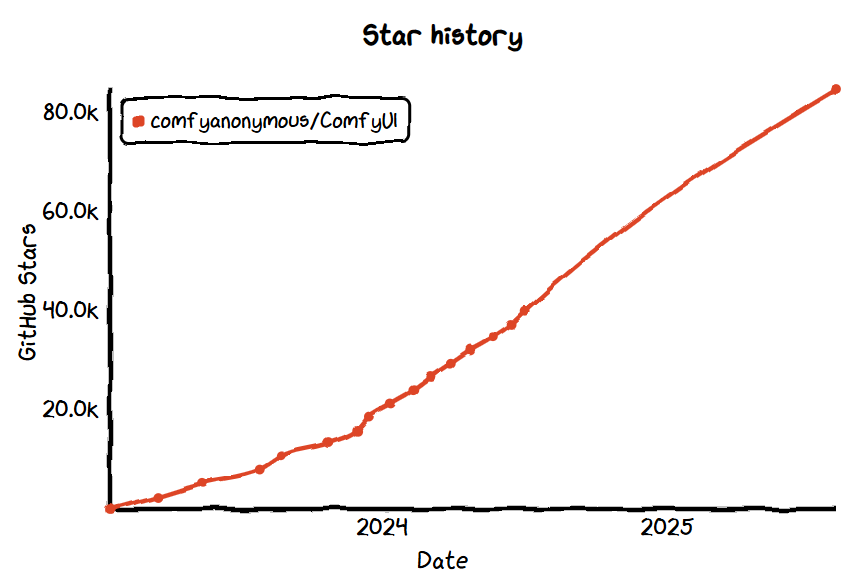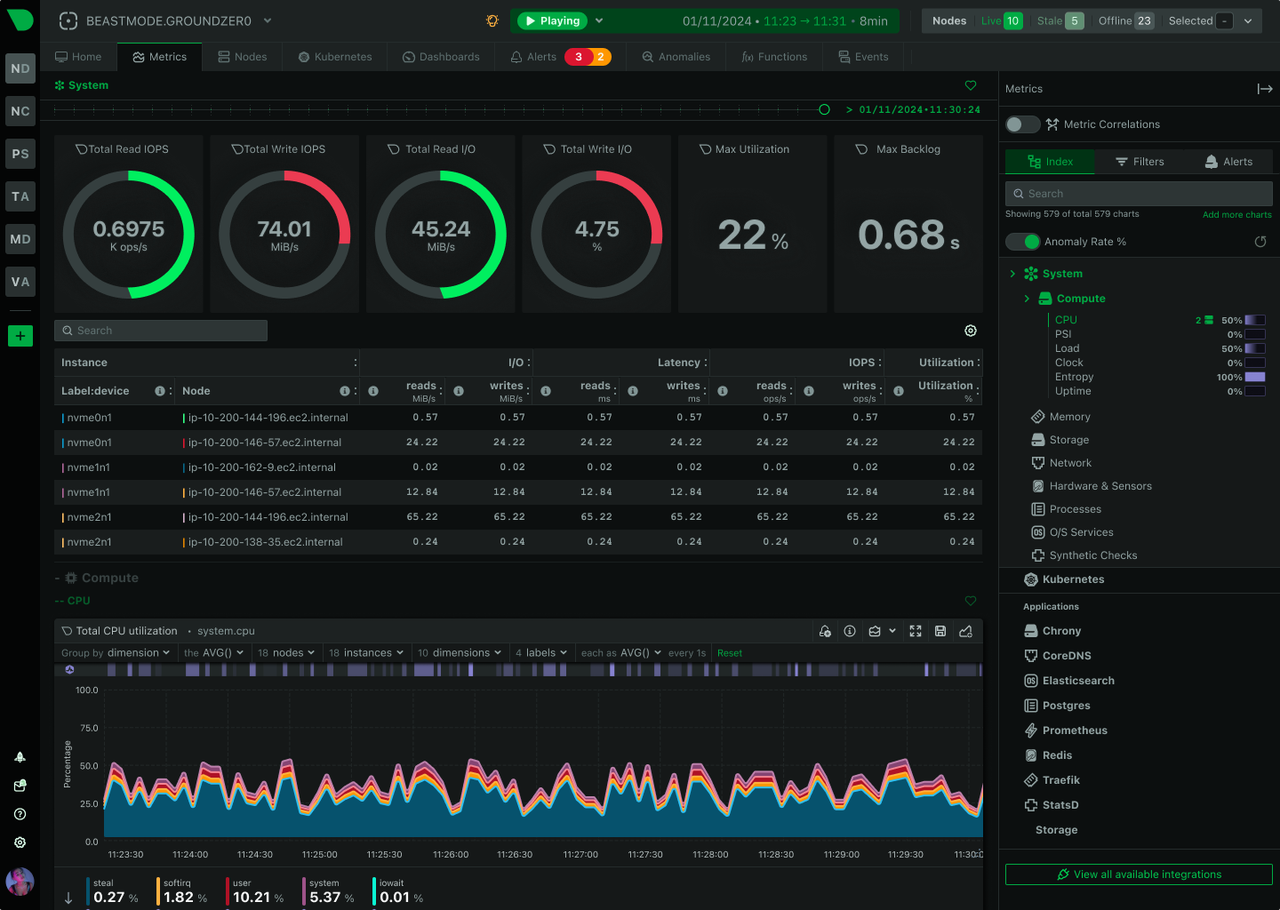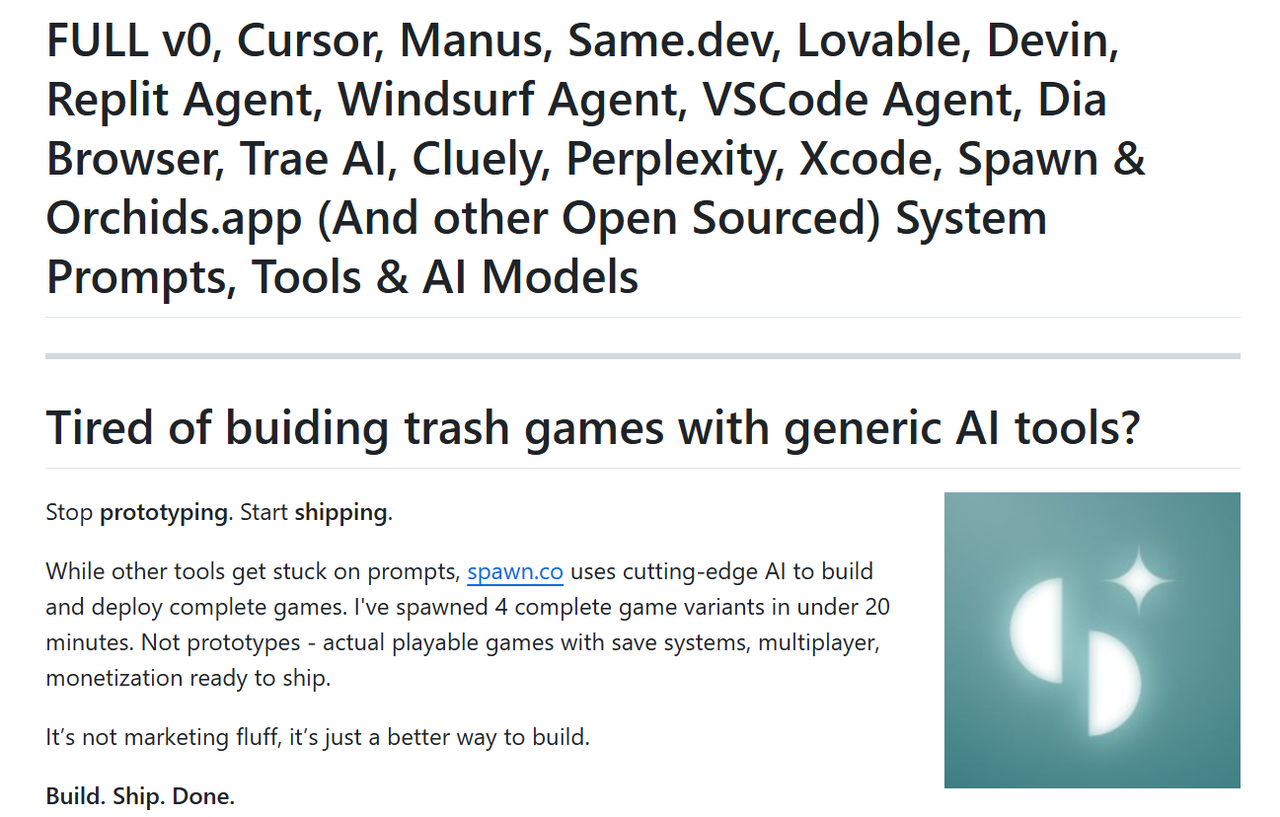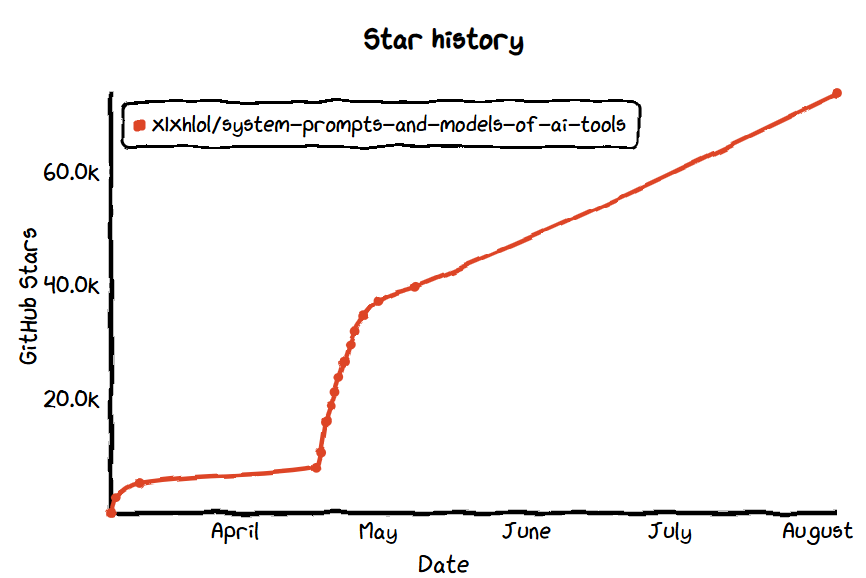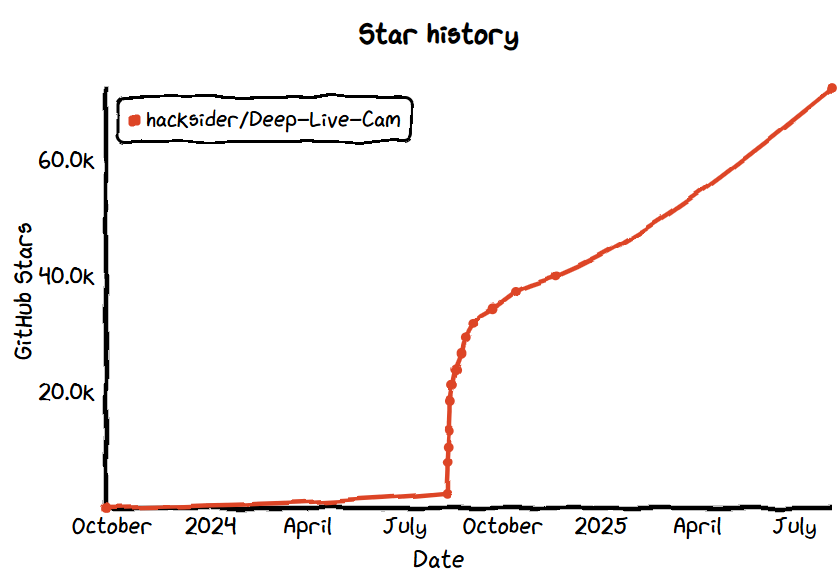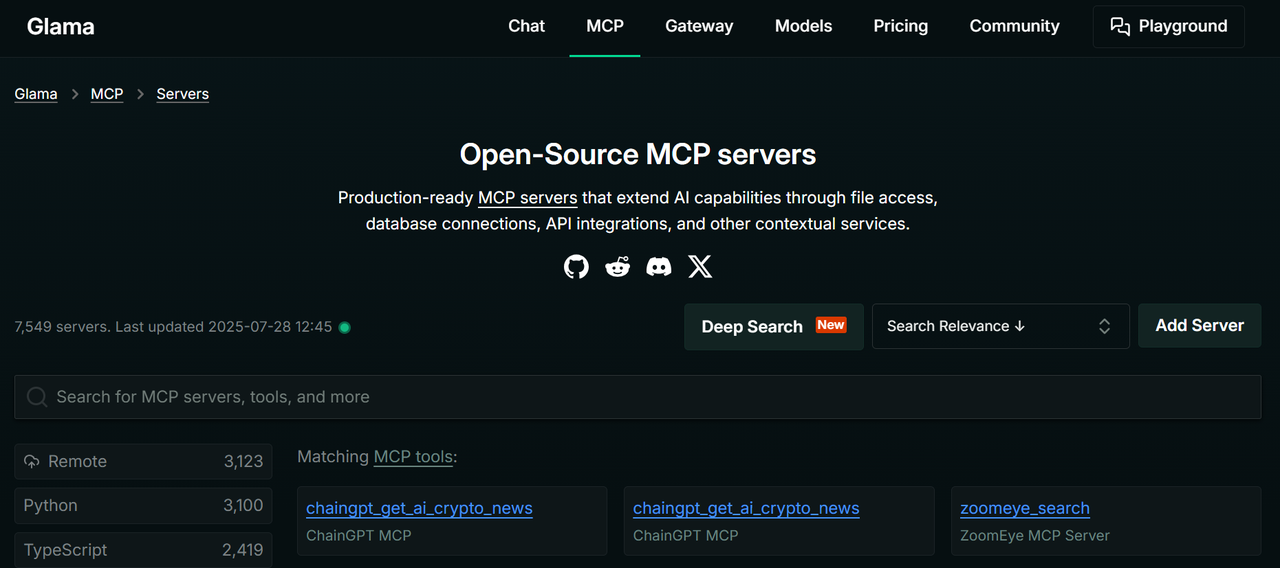On August 5, 2025, OpenAI released two open-source large language models: gpt-oss-120b and gpt-oss-20b. This marks OpenAI’s first open-source language model release since GPT-2.
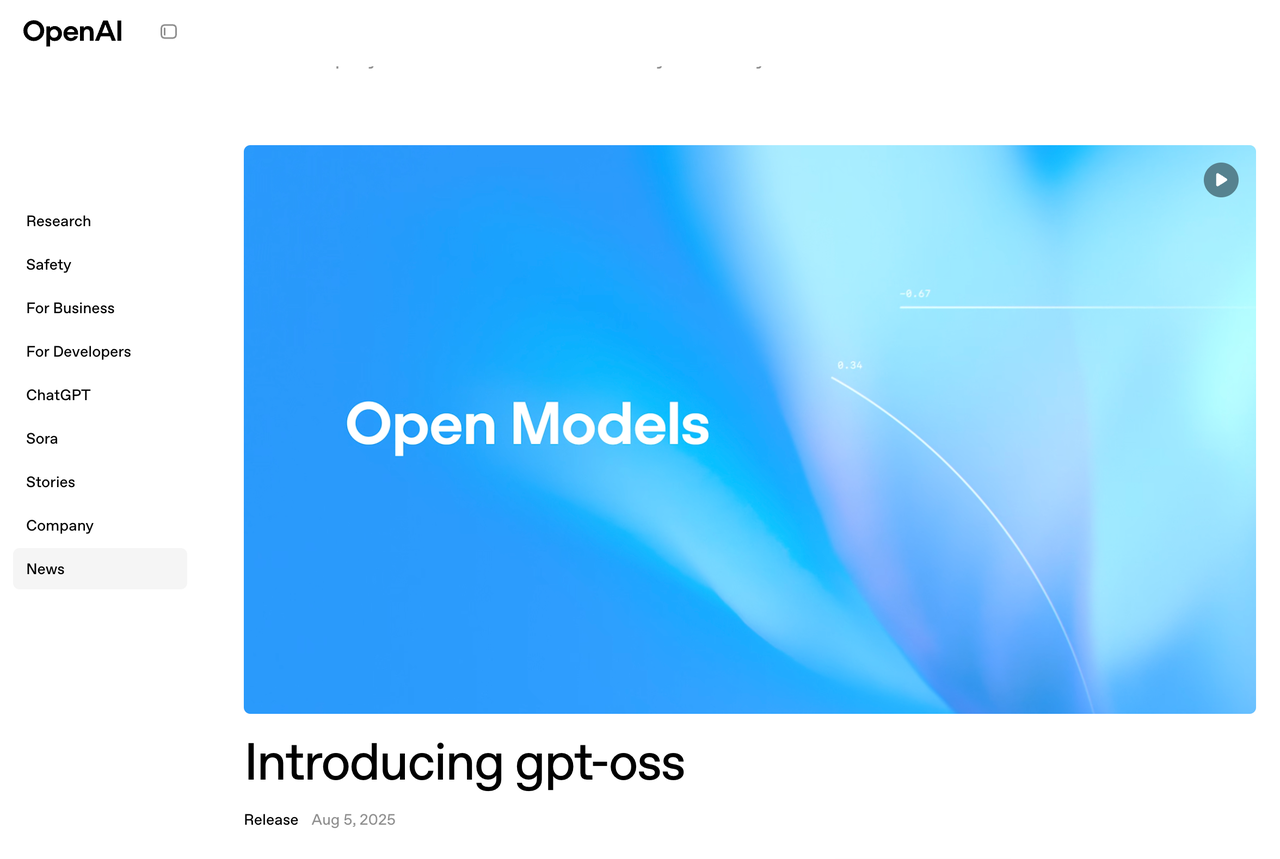
The open-source LLM ecosystem has just gained two heavyweight members. For many developers, open-source has always been a priority when building AI projects. OpenAI’s participation undoubtedly strengthens the open-source movement even further.
Taking this opportunity, let’s explore some of the most noteworthy open-source AI projects. Whether you’re integrating LLMs, building autonomous agents, working on multimodal generation, or developing knowledge-based Q&A systems—GitHub already offers a wealth of high-quality open-source options.
We’ve compiled a list of the top 20 most-starred AI projects on GitHub, categorized by functionality, to help you navigate and choose the right tools.
If you’re also interested in the Model Context Protocol (MCP), check out our article from last week:
Top 8 Open Source MCP Projects with the Most GitHub Stars
📌 Project Navigation
| Function Category | Project No. + Name | Summary |
|---|---|---|
| 💡Intelligent Agents & Automation Workflows | No.1 AutoGPT No.3 n8n No.4 LangChain No.18 gpt-engineer | Frameworks and tools for building autonomous agents, multi-step task execution, and workflow orchestration. |
| 🎨 Multimodal Generation / Prompting / Data & Ops Platforms | No.2 Stable Diffusion web UI No.8 Supabase No.9 ComfyUI No.10 Netdata No.11 system-prompts-and-models-of-ai-tools No.12 Deep-Live-Cam No.20 Meilisearch | Covers image generation, prompt engineering, real-time monitoring, and backend data platforms—expanding the capabilities and efficiency of AI tools. |
| 💬 Visual Chat Interfaces & AI App Frontends | No.5 Dify No.6 Open WebUI No.14 Lobe Chat No.19 ChatGPT | Open-source UIs and frontend tools for integrating LLMs and rapidly building chat-based applications. |
| 📚 Knowledge Q&A / Document RAG Systems | No.13 Glama No.16 RAGFlow | Tools for document-based retrieval-augmented generation (RAG), ideal for building enterprise knowledge bases and intelligent customer support. |
| 🧠 Model Training / Fine-tuning / Learning Resources | No.7: Generative AI for Beginners No.15 LLMs-from-scratch No.17 LLaMA Factory | Resources for training, fine-tuning, or building LLMs from scratch—perfect for both beginner and advanced model developers. |
💬 Hey, you’re reading the NocoBase blog. NocoBase is an open-source no-code/low-code development platform for building enterprise applications, internal tools, and workflow systems — fully self-hosted, plugin-based, and developer-friendly. → Explore NocoBase on GitHub
No.1: AutoGPT
- GitHub Star: 177k
- GitHub: https://github.com/Significant-Gravitas/AutoGPT
- Website: https://agpt.co/
Overview:
Released in March 2023 by Toran Bruce Richards and Significant Gravitas, AutoGPT was the first open-source project to implement an autonomous task execution model powered by GPT-4. It quickly went viral on GitHub and inspired a wave of derivative projects. With growing demand for automation and AI integration in business operations, Auto-GPT has evolved into a full-featured platform that supports persistent operation, visual workflow building, and multi-model integration. It is becoming a core tool for developers to build intelligent agents and embed AI into business workflows.
Key Features:
- Seamless Low-Code Workflow Builder: Intuitive interface enables users to build complex workflows without deep coding knowledge and easily connect various tools and assistants.
- Autonomous Execution & Persistent Agents: Agents can run continuously in cloud or hosted environments without human intervention, and can be triggered by external events such as timers, webhooks, or file changes.
- Smart Automation with High Reliability: Built-in AI models and decision logic automate repetitive tasks, with monitoring and analytics tools that provide visibility into agent behavior, performance, and uptime.
Use Cases:
- Enterprise Workflow Automation: Build intelligent agents to automate customer follow-ups, report generation, and more.
- Low-Code AI Assistant Development: Easily create agents with data processing and content generation capabilities.
- AI-Driven Decision Support: Integrate databases, models, and APIs to create automated decision-making workflows.
No.2: Stable Diffusion web UI
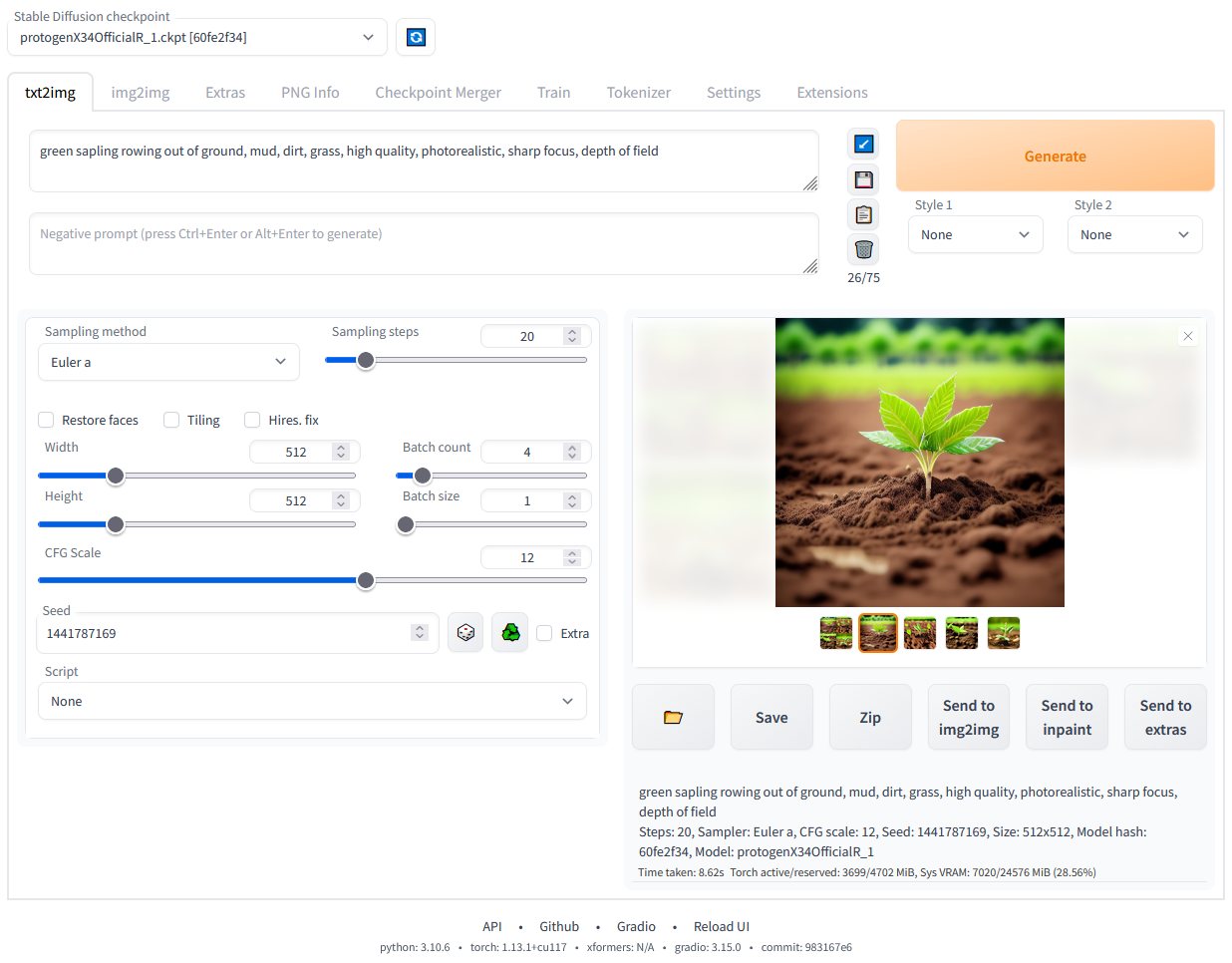
- GitHub Star: 155k
- GitHub: https://github.com/AUTOMATIC1111/stable-diffusion-webui
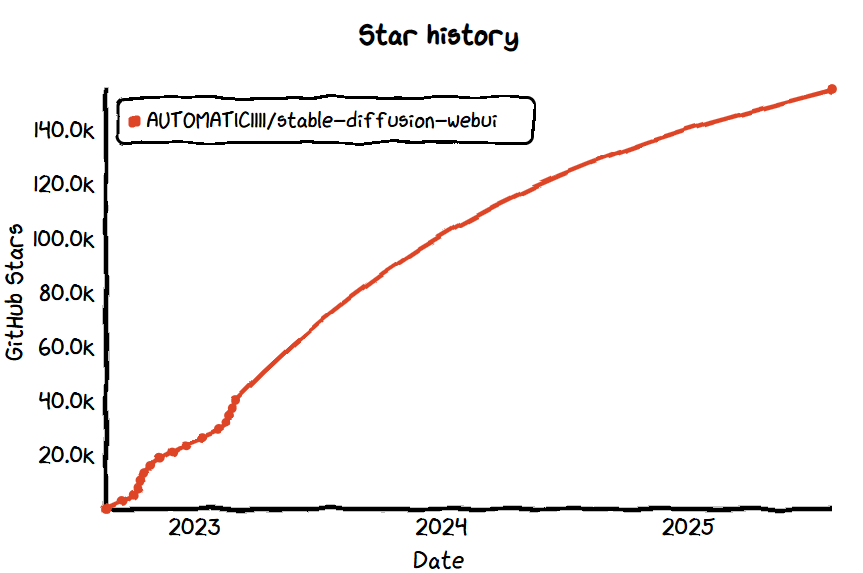
项目概览:
Overview:
Stable Diffusion catalyzed an explosion in open-source text-to-image models, and the Stable Diffusion Web UI by AUTOMATIC1111 has become the go-to tool for developers and creators. Initially a simple Gradio-based interface, it has evolved into a powerful and extensible visual generation platform. It ranks consistently among GitHub’s most popular AI and AIGC projects, supporting model switching, LoRA fine-tuning, image control, batch generation, and scripting.
Key Features:
- Multi-Model Support with Dynamic Loading: Instantly switch between LoRA models, Checkpoints, and VAE decoders without restarting; integrated with Hugging Face and local model repositories.
- Advanced Image Generation & Control: Features include text-to-image, image-to-image, inpainting, batch generation, and extensive parameter control.
- Extensive Plugin Ecosystem: Offers UI improvements, model training/fine-tuning tools, workflow integrations, and deployment optimizations.
Use Cases:
- Creative Image & Visual Content Generation: Quickly deploy for creating characters, covers, branding assets.
- AIGC Prototype Development: Acts as a backend for creative communities and wallpaper generators.
- Automated Image Pipelines: Combine with scripts/plugins for batch generation of comics, product images, etc.
No.3: n8n
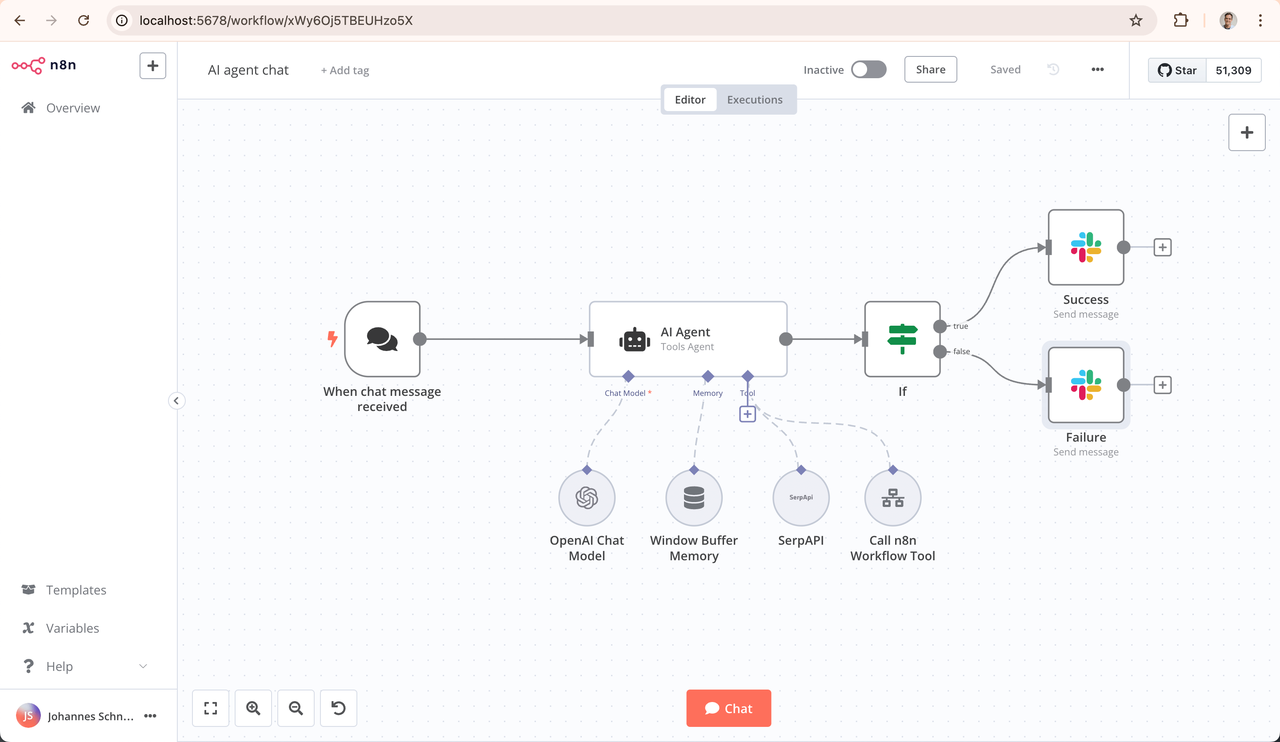
- GitHub Star: 127k
- GitHub: https://github.com/n8n-io/n8n
- Website: https://n8n.io/
Overview:
n8n is an open-source automation platform that enables visual workflow building and integration with AI tools. It’s ideal for building automation agents and multi-system collaboration flows.
👉 Click here for a full introduction and use cases of n8n.
No.4: LangChain
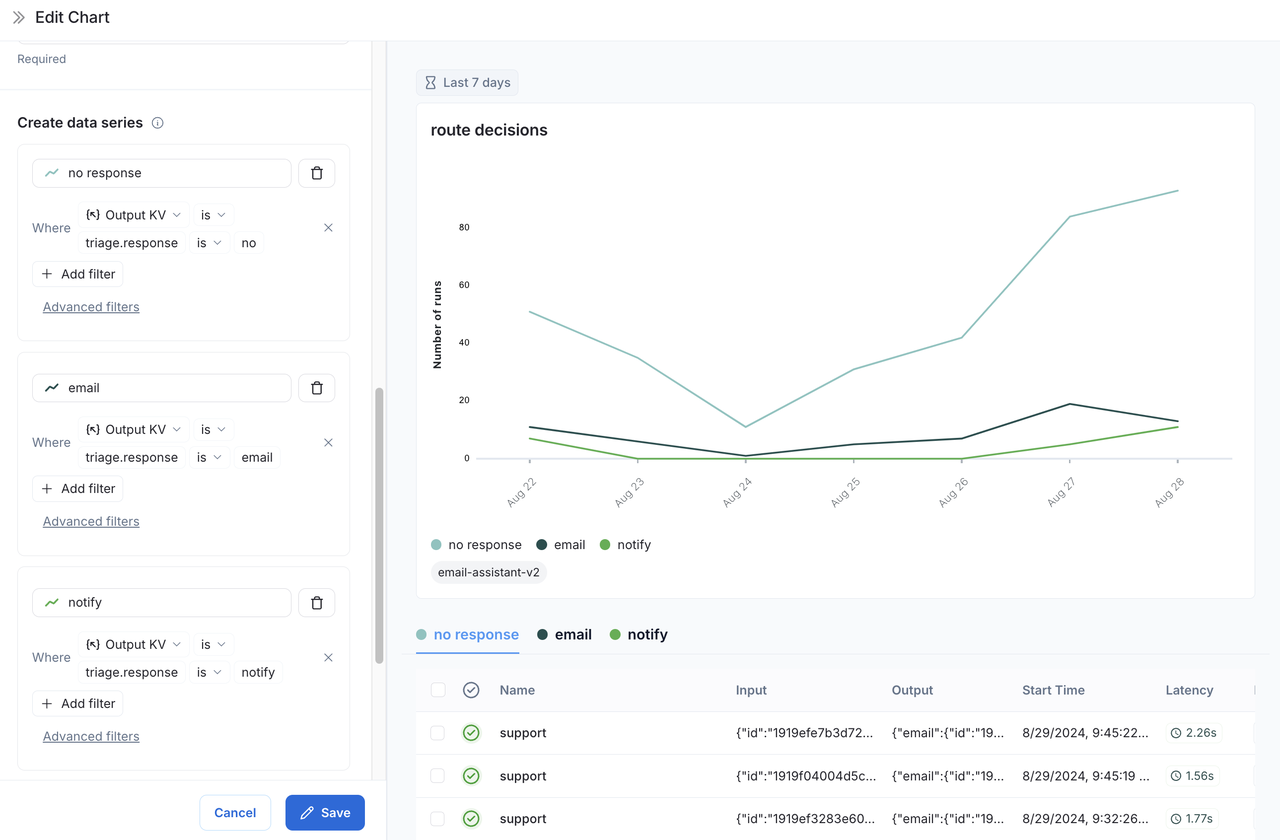
- GitHub Star: 113k
- GitHub: https://github.com/langchain-ai/langchain
- Website: https://python.langchain.com/
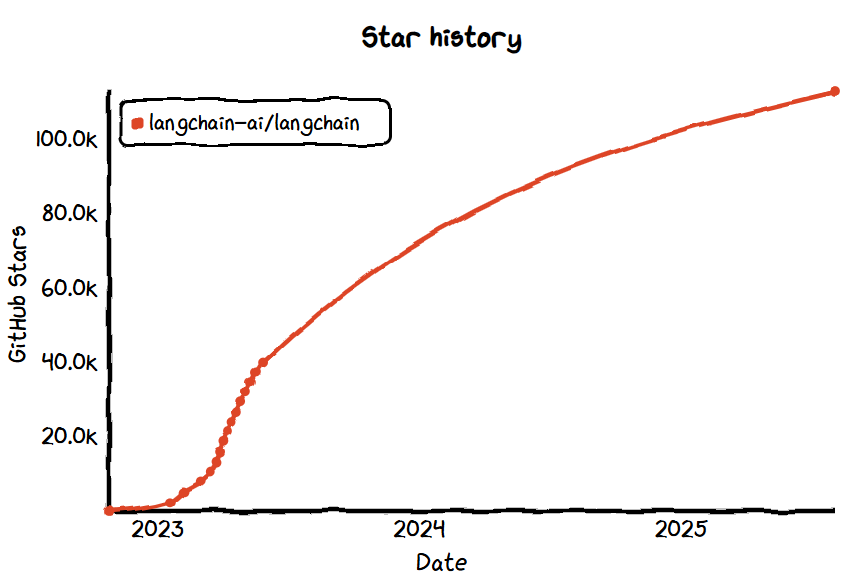
Overview:
Since its open-source release in late 2022, LangChain has become the de facto standard for building LLM-powered applications. Created by Harrison Chase, it addresses the challenge of building complex applications with powerful language models. Its modular architecture abstracts prompt templating, document retrieval, tool calling, and agent execution, making it easy for developers to assemble chatbots, agents, RAG systems, and more.
Key Features:
- Prompt and Chain Framework: Supports modular, sync/async chain construction and agent workflows.
- Built-in RAG Capabilities: Native support for RAG workflows, including document chunking, embedding, semantic search via vector databases like FAISS and Pinecone.
- Agent Framework with Tool Integration: Based on ReAct and Tool/Toolkit patterns, enabling multi-step reasoning and collaborative agents.
Use Cases:
- Enterprise Knowledge Assistants: Contextual Q&A systems for PDFs, websites, etc.
- Conversational Agents with Tooling: Build memory-enabled, tool-using agents for analytics or multi-tool coordination.
- AI Product Prototyping: Rapidly build, integrate, and iterate on AI app workflows.
No.5: Dify
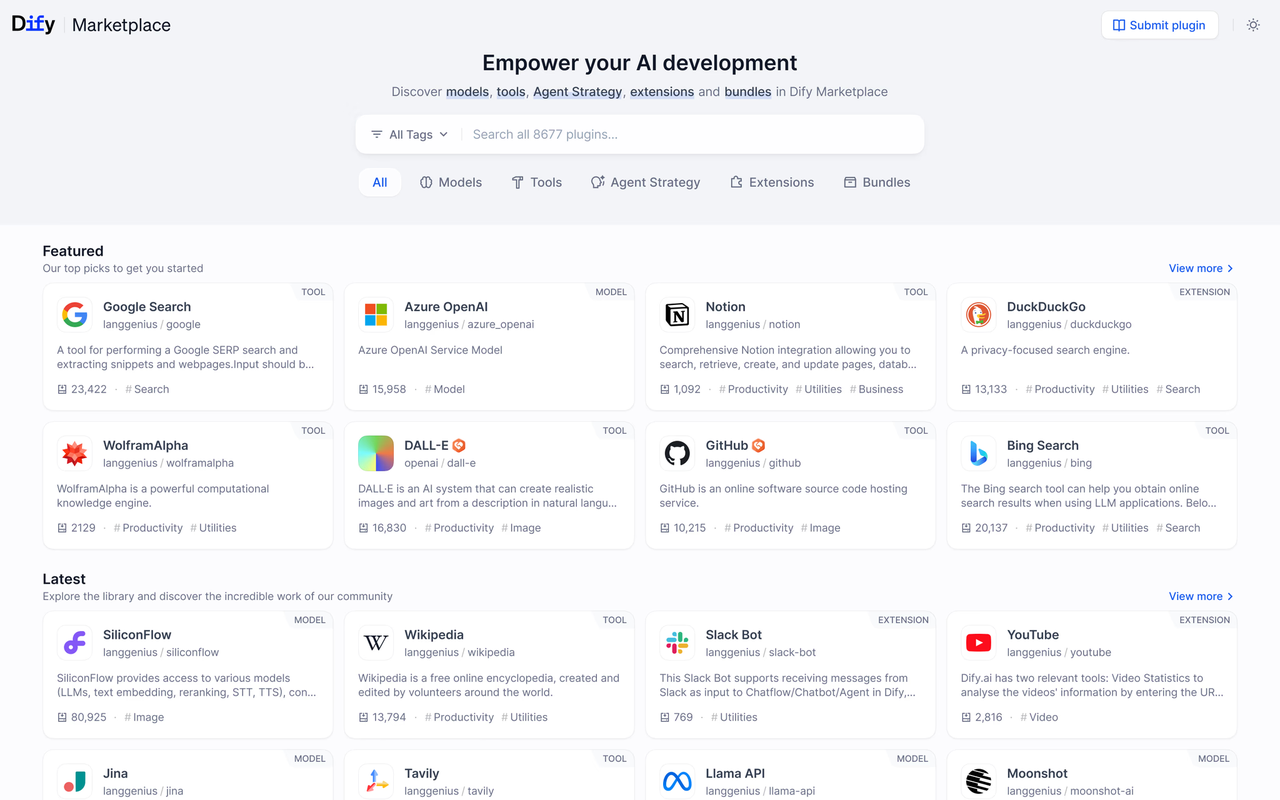
- GitHub Star: 110k
- GitHub: https://github.com/langgenius/dify
- Website: https://dify.ai/
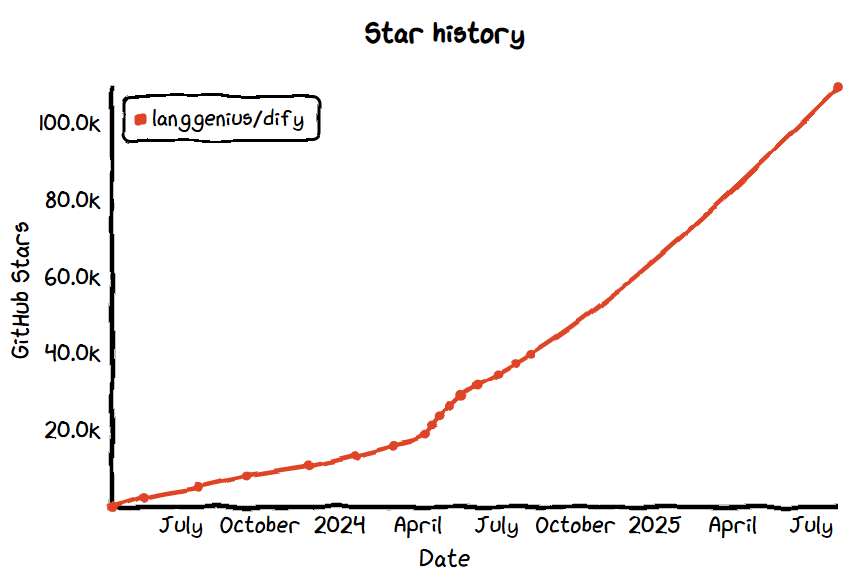
Overview:
Dify provides an all-in-one toolchain to help developers rapidly build RAG applications such as enterprise Q&A bots, AI forms, and domain-specific assistants. It supports local deployment and multi-model integration.
👉 Click here for a full introduction and use cases of Dify.
No.6: Open WebUI
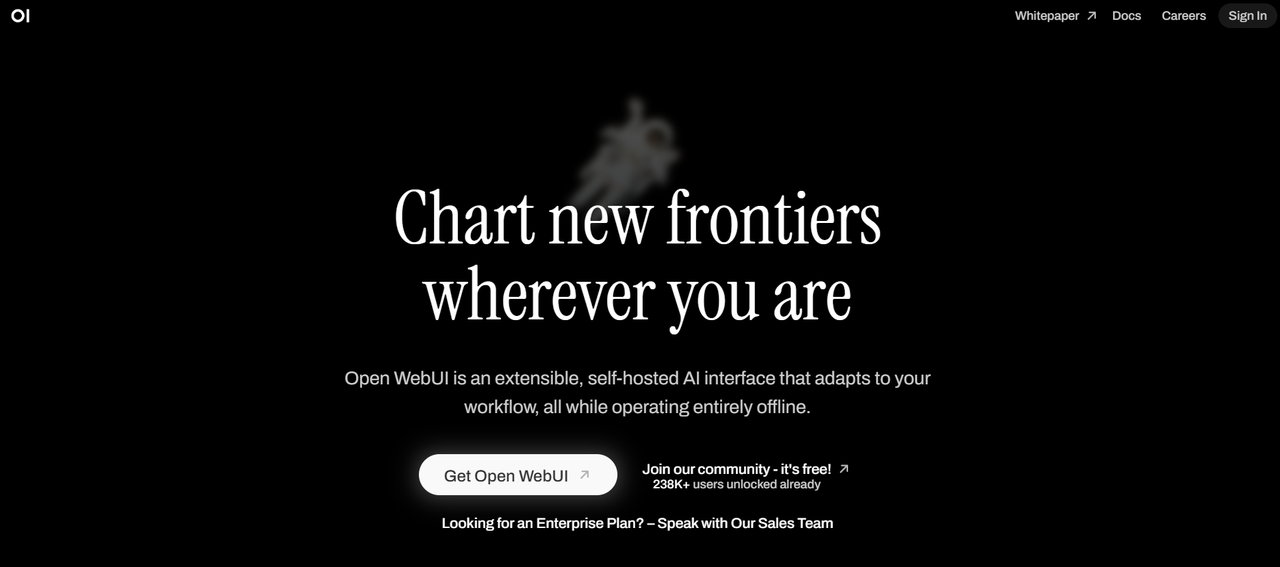
- GitHub Star: 105k
- GitHub: https://github.com/open-webui/open-webui
- Website: https://openwebui.com/
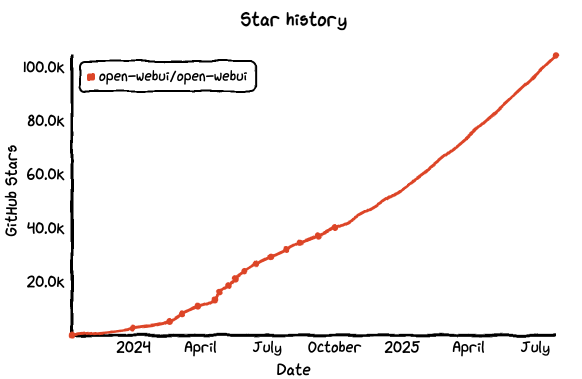
Overview:
Open WebUI is a lightweight, extensible web front-end for locally deployed LLMs. It includes support for access control and is suitable for building private AI assistant UIs or model debugging platforms.
👉 Click here for a full introduction and use cases of Open WebUI.
No.7: Generative AI for Beginners
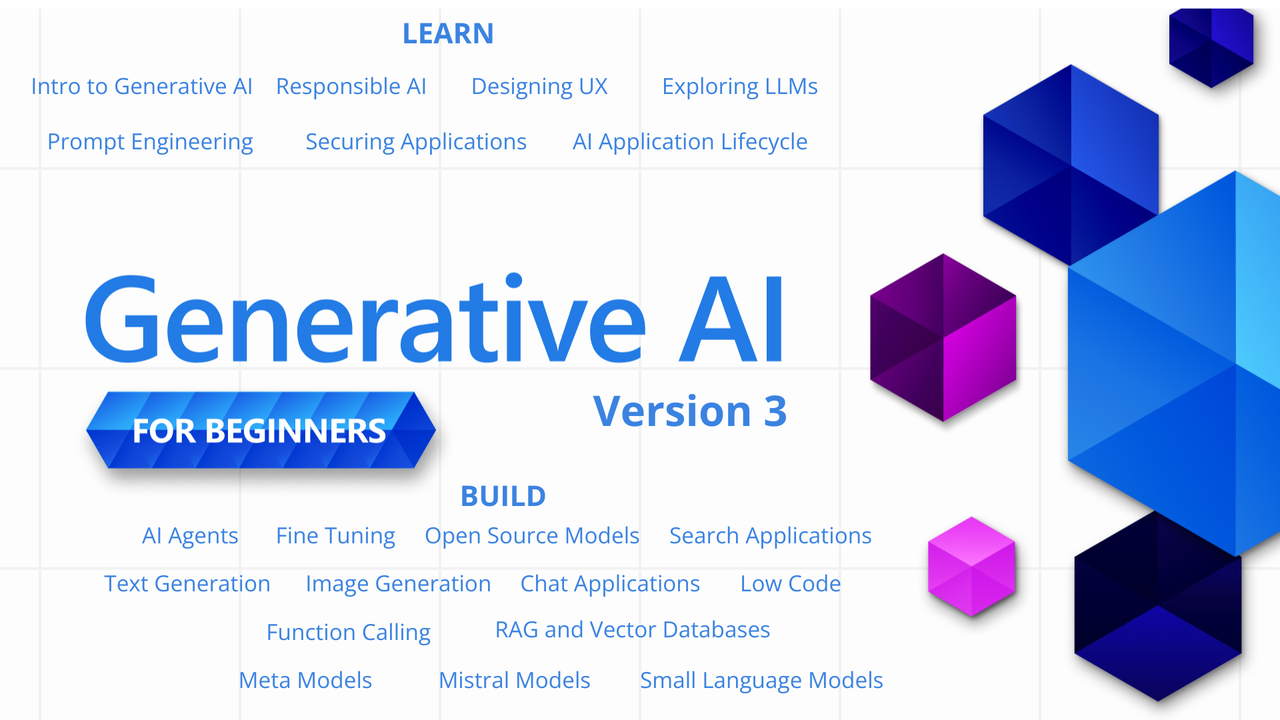
- GitHub Star: 94k
- GitHub: https://github.com/microsoft/generative-ai-for-beginners
- Website: https://microsoft.github.io/generative-ai-for-beginners/
Overview:
As generative AI moves from tech trend to mainstream adoption, Microsoft has launched this open-source course for global developers—Generative AI for Beginners. Maintained by the Microsoft Cloud Advocates team, the course has reached its third edition and now includes 21 lessons covering how to build text generation, image generation, RAG, function calling, and agent-based AI applications.
No.8: Supabase
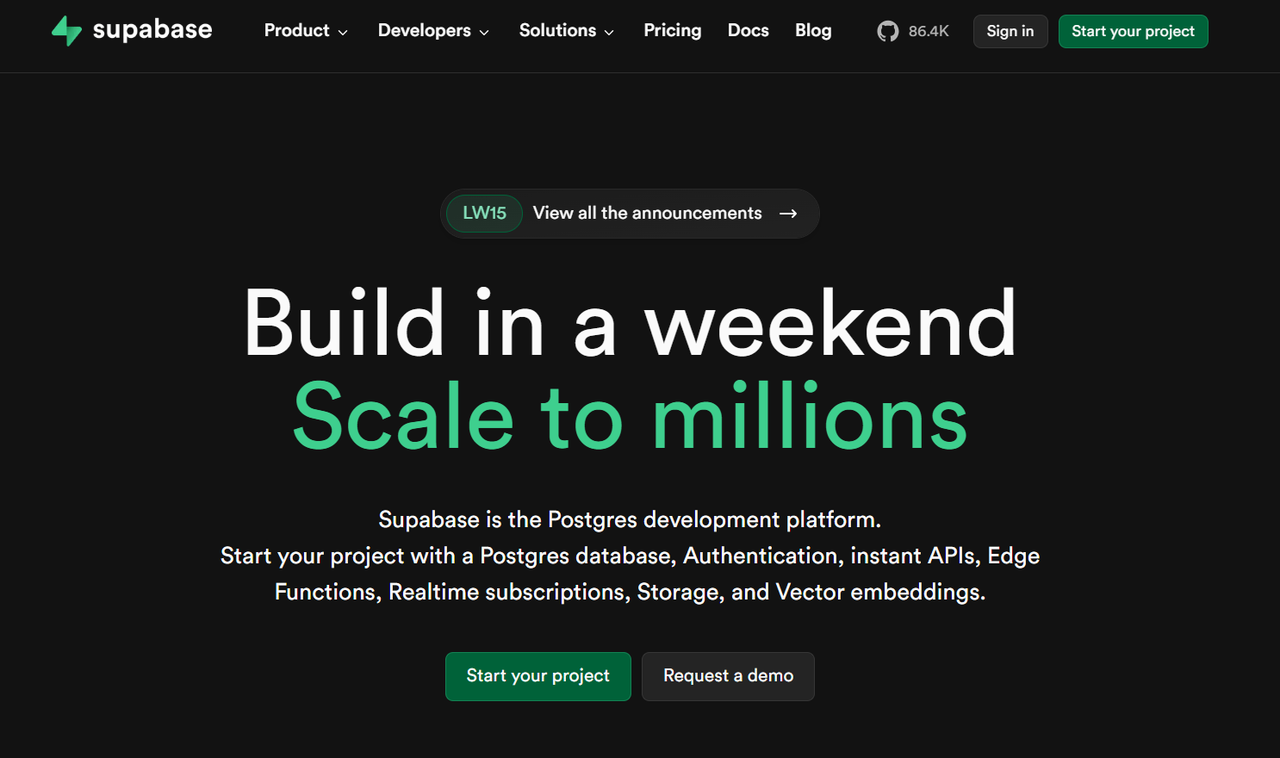
GitHub Star: 86.6k
GitHub: https://github.com/supabase/supabase
Website: https://supabase.com/
Overview:
Originally launched as an open-source Firebase alternative with basic DBaaS features (PostgreSQL + REST API), Supabase has rapidly evolved over the past two years. Fueled by the explosive growth of BaaS and AI application needs, it now offers a full-stack backend platform with authentication, storage, real-time subscriptions, edge functions, and more. Built on PostgreSQL, it delivers a Firebase-like developer experience while enabling full self-hosting and data control—making it ideal for modern web, mobile, Web3, and AI-native apps.
Key Features:
- Production-Ready PostgreSQL Platform: Auto-generates REST and GraphQL APIs, supports row-level security (RLS), real-time subscriptions, custom functions, and extensions like
pgvectorand PostGIS. - Built-In Auth & User Management: Full auth suite with MFA, access token control, RBAC, JWT, and user interface for management.
- File Storage with CDN Delivery: Upload any file types, enforce access controls, and trigger events with built-in image processing and presigned URLs.
Use Cases:
- Rapid AI MVPs & Hackathon Projects: Ideal for launching prototypes with near-zero backend effort.
- Vector DB for AI Apps: Supports
pgvectorand permission controls, perfect for RAG, Copilot, and embedded AI systems. - Firebase Alternative for Small Teams: Offers a full backend with self-hosting capabilities for teams requiring full data control.
No.9: ComfyUI
GitHub Star: 84.4
GitHub: https://github.com/comfyanonymous/ComfyUI
Website: https://www.comfy.org/
项目概览:
Overview:
ComfyUI is an open-source visual workflow tool for image generation, launched in 2023 and maintained by community developers. Designed specifically for the Stable Diffusion ecosystem, it turns complex prompt engineering, image control, and model management into a visual drag-and-drop experience, significantly lowering the barrier for AI image creation.
Key Features:
- Node-Based Image Workflow Editor: Build visual pipelines using nodes for model selection, prompt injection, and post-processing—what you see is what you get.
- Broad Model and Plugin Support: Compatible with SD 1.x/2.x/SDXL, and supports LoRA, ControlNet, T2I-Adapter, IP-Adapter, etc.
- High Performance & Reusability: Optimized execution engine with caching; supports high-resolution outputs and batch processing; workflows are savable and reusable.
Use Cases:
- AI Visual Content Creation: Creators can design stylized workflows via drag-and-drop to control prompt-to-image generation.
- Training & Experiment Prototyping: Researchers can experiment with custom training/testing workflows.
- Backend for Image/Video Tools: Serves as an engine for SaaS image tools or video synthesis platforms.
No.10: Netdata
GitHub Star: 75.3k
GitHub: https://github.com/netdata/netdata
Website: https://www.netdata.cloud/
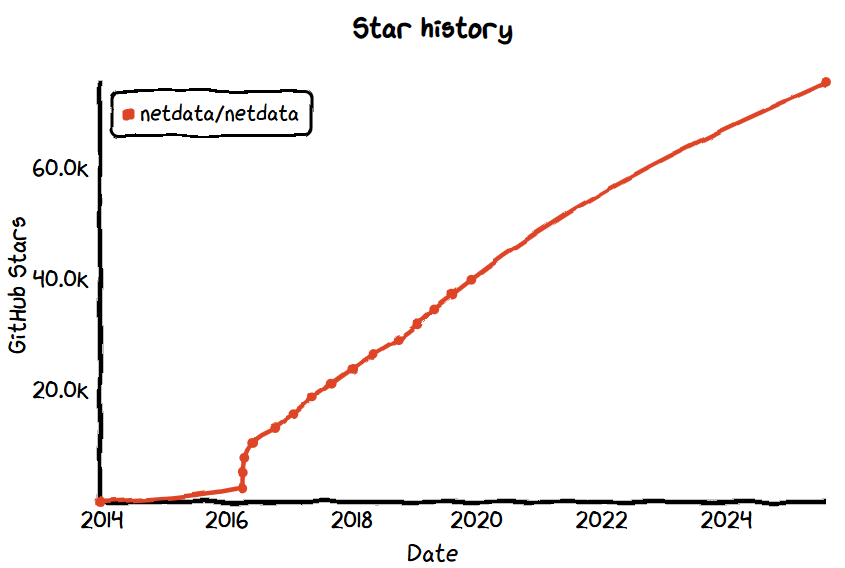
Overview:
Netdata is an open-source, real-time system monitoring tool widely used in AI deployment scenarios to track GPU, memory, I/O, and other resource usage metrics. It helps ensure the stability of large model inference processes.
👉 Click here for a full introduction and use cases of Netdata.
No.11: system-prompts-and-models-of-ai-tools
GitHub Star: 73.7k
GitHub: https://github.com/x1xhlol/system-prompts-and-models-of-ai-tools
Overview:
This project is an open-source repository that archives and organizes system prompts and model configurations used by various AI tools such as ChatGPT, Claude, and Perplexity. As one of the first resources to systematically collect these behind-the-scenes prompt templates, it provides valuable materials for prompt engineering, behavior analysis, and reproducing AI product features.
Key Features:
- Collection of System Prompts: Includes original system-level prompts like role definitions, behavioral constraints, and tone requirements.
- Model Call Settings & API Parameters: Covers details such as model versions, temperature settings, and token limits.
- Community Updates & Collaboration: Continuously updated with contributions from the community to promote transparency in prompt engineering.
Use Cases:
- Reproducing & Debugging AI Behavior: Developers can replicate product behavior using shared prompts.
- Prompt Engineering Research & Education: Real examples for teaching and hands-on fine-tuning.
- System Prompt Design Reference: Quality templates for building custom AI assistants or agent systems.
No.12: Deep-Live-Cam
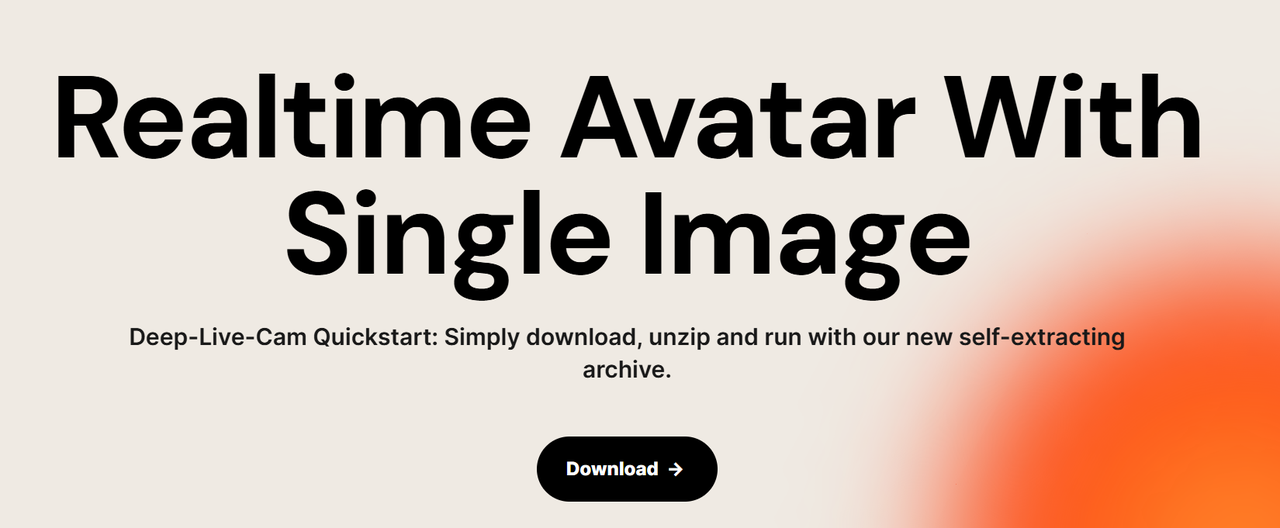
GitHub Star: 72.3k
GitHub: https://github.com/hacksider/Deep-Live-Cam
Website: https://deeplivecam.net/
Overview:
Deep-Live-Cam is an open-source project combining AI-powered video processing and real-time visual enhancement. It applies deep learning models to live webcam footage for portrait enhancement, beautification, and style transfer. Designed as an “AI-driven live camera enhancement engine,” it serves virtual streamers, video conferencing, and live beauty applications.
Key Features:
- Real-Time Portrait Recognition & Processing: ONNX/TensorRT-powered facial recognition, segmentation, and background replacement.
- Built-In Beautification Filters: Includes effects like smoothing, whitening, enlarging eyes, and slimming faces with adjustable parameters.
- Multiple Visual Styles & Effects: Offers filters such as anime, oil painting, cyberpunk, and more.
Use Cases:
- Virtual Streaming & Visual Content Enhancement: Real-time beautification and effects to increase viewer engagement.
- AI-Powered Video Conferencing: Compatible with platforms like Zoom and OBS for enhanced visuals.
- Creative Short Video Tools: Foundation for interactive or personalized video creation tools and platforms.
No.13: Glama
GitHub Star: 64.8k
GitHub: https://github.com/punkpeye/awesome-mcp-servers
Website: https://glama.ai/mcp/servers
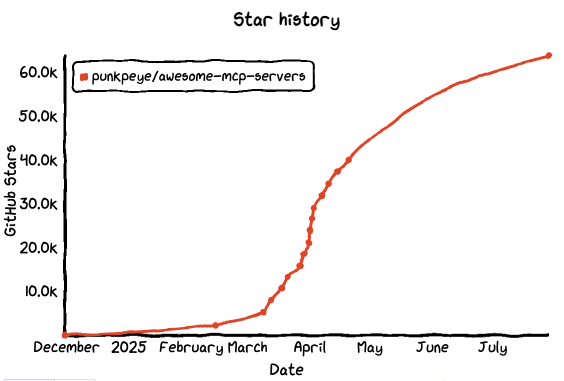
Overview:
Glama focuses on enterprise-level AI application deployment. It supports any backend compatible with MCP (Model Context Protocol), allowing centralized management of model context, instructions, and permission policies—helping build more controlled LLM systems.
👉 Click here for a full introduction and use cases of Glama.
No.14: Lobe Chat
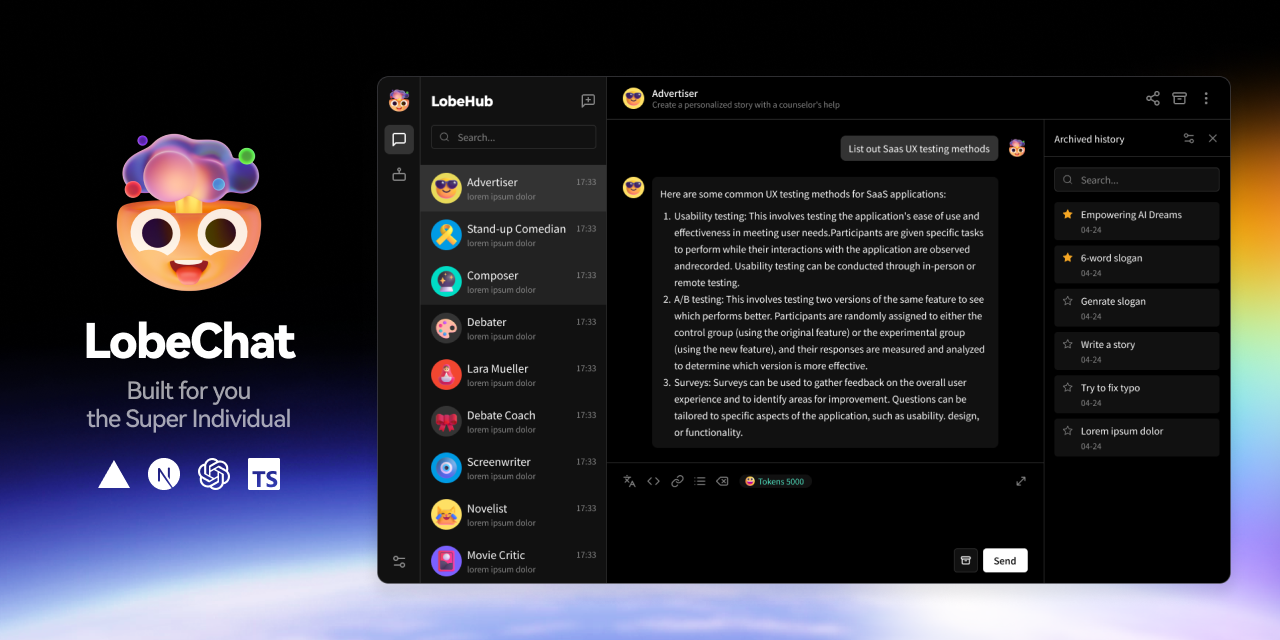
GitHub Star: 64.1k
GitHub: https://github.com/lobehub/lobe-chat
Website: https://lobechat.com/
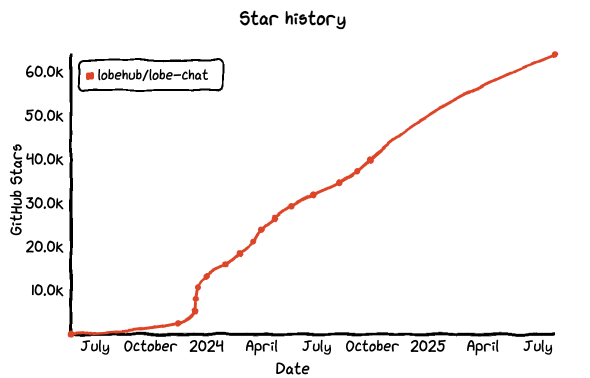
Overview:
Lobe Chat is an open-source multi-model chat assistant platform focused on local deployment and plugin extensibility. It aims to provide a user experience similar to ChatGPT.
👉 Click here for a full introduction and use cases of Lobe Chat.
No.15: LLMs-from-scratch
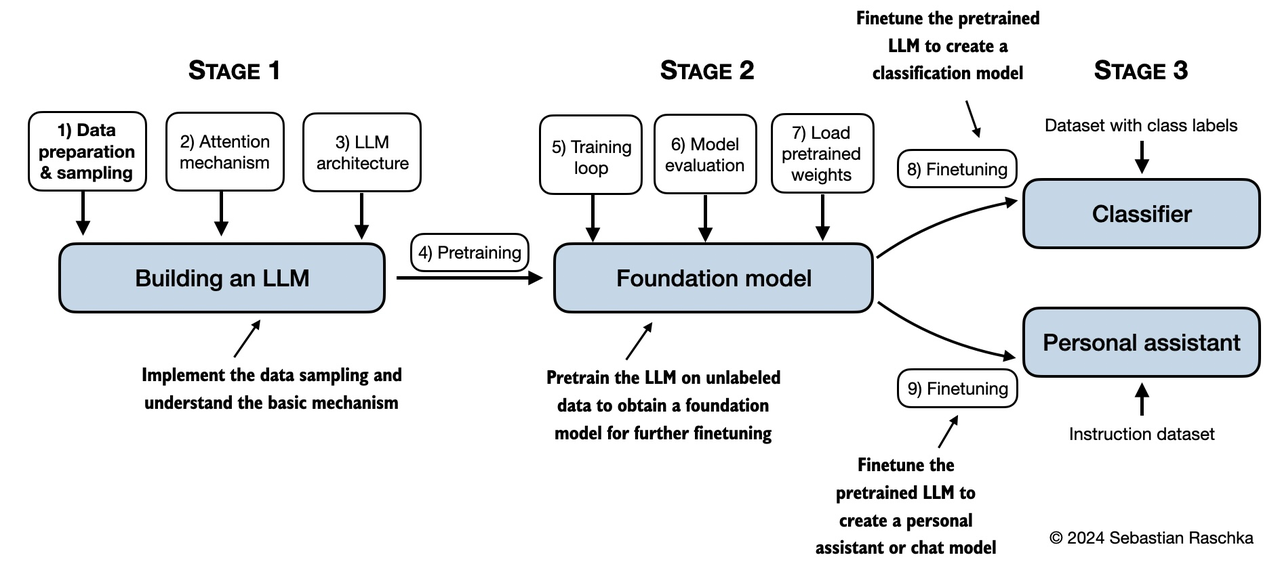
GitHub Star: 62.2k
GitHub: https://github.com/rasbt/LLMs-from-scratch
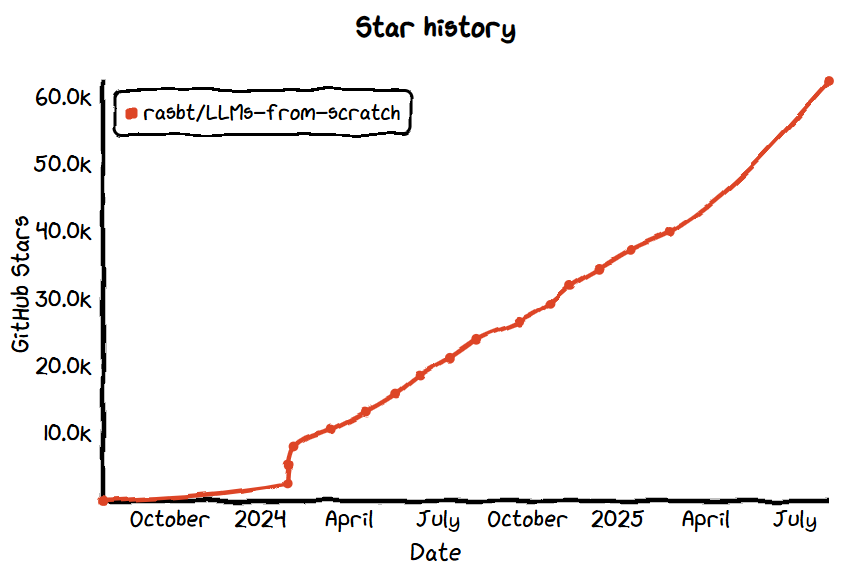
Overview:
LLMs-from-scratch is a hands-on project for training large language models from scratch. Launched by a Hugging Face community member, it covers the full process from data preparation, tokenizer design, model architecture, to training and evaluation—perfect for those who want a deeper understanding of LLMs.
Key Features:
- Step-by-Step Transformer Construction: Implements attention, positional encoding, and other components from the ground up.
- Custom Tokenizer & Data Pipeline: Supports full pipeline from raw text to training samples.
- Fine-Tuning & Evaluation: Compatible with open datasets and pretrained checkpoints.
Use Cases:
- LLM Education & Workshops: Ideal for teaching model architecture and training methods.
- Custom Lightweight LLMs: Researchers can build domain-specific models.
- Training Process Reproduction: Useful for comparing architectural or hyperparameter choices.
No.16: RAGFlow
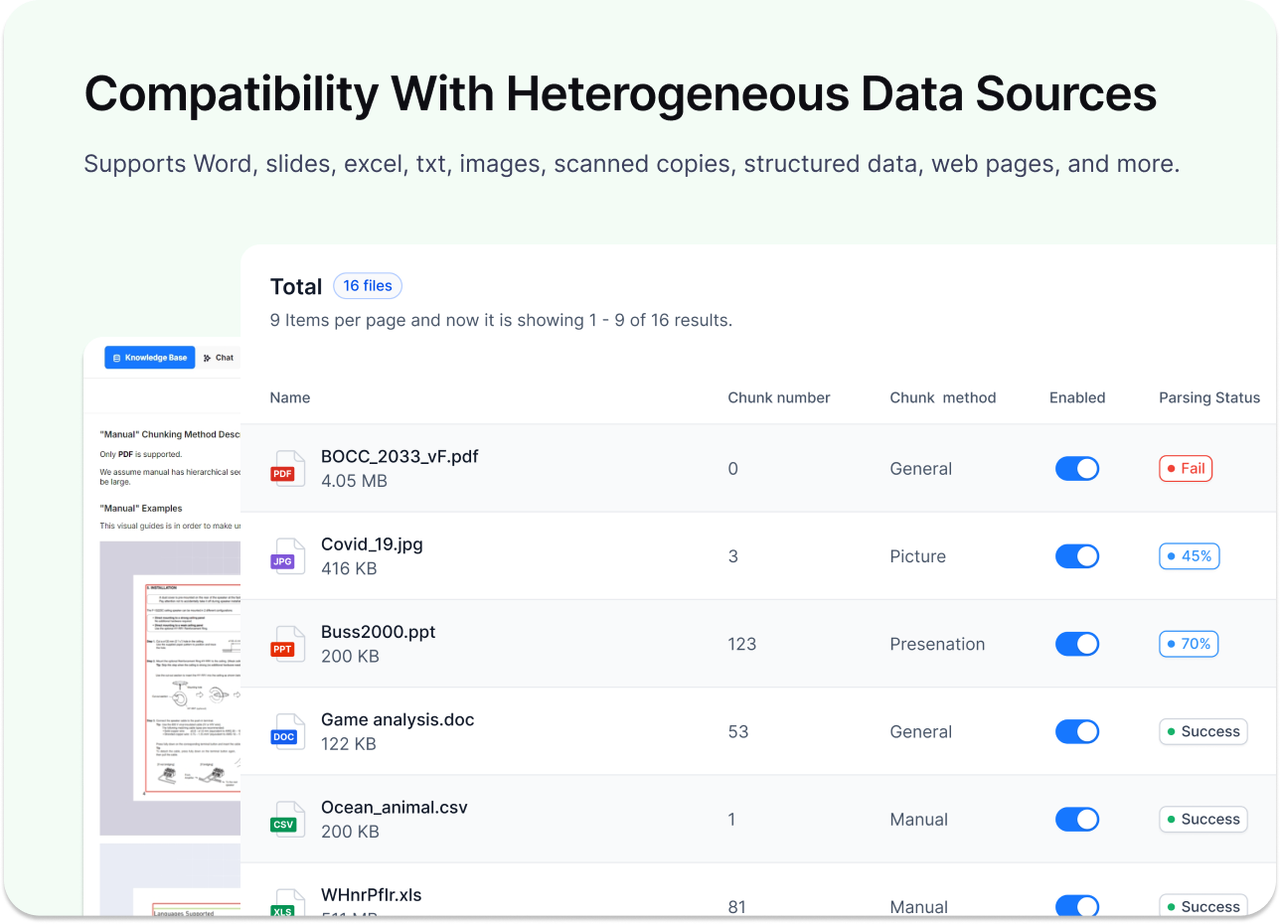
GitHub Star: 61.7k
GitHub: https://github.com/infiniflow/ragflow
Website: https://ragflow.io/
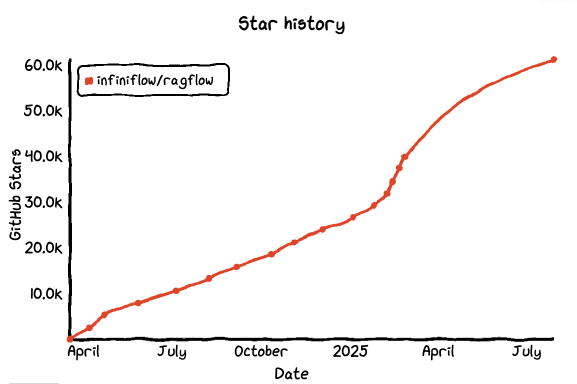
Overview:
RAGFlow is a modular framework for building RAG (Retrieval-Augmented Generation) systems. It covers data ingestion, vector retrieval, prompt templating, and multi-model orchestration—ideal for quickly prototyping Q&A systems.
👉 Click here for a full introduction and use cases of RAGFlow.
No.17: LLaMA Factory

GitHub Star: 55.6k
GitHub: https://github.com/hiyouga/LLaMA-Factory
Website: https://llamafactory.readthedocs.io/
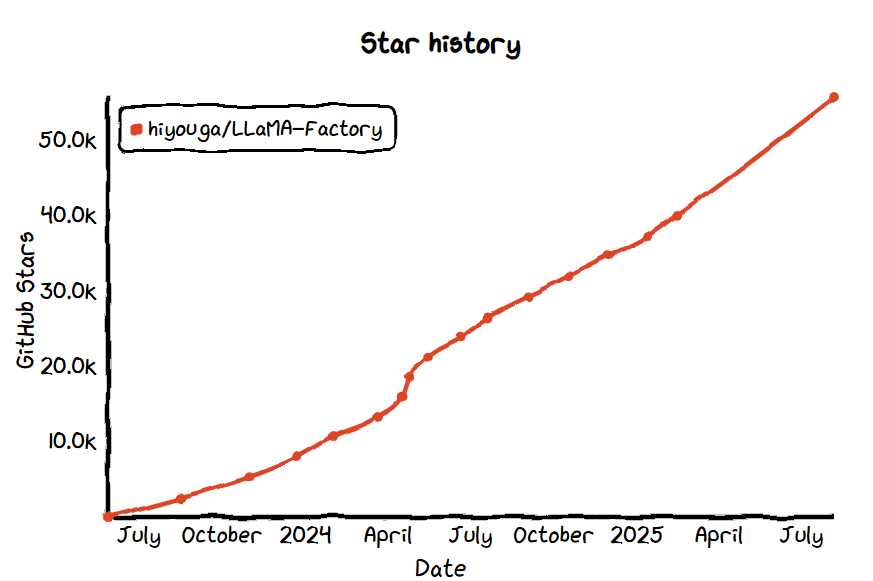
Overview:
LLaMA Factory is a fine-tuning and deployment toolkit tailored for Meta’s LLaMA model series (LLaMA2, LLaMA3). It integrates LoRA, QLoRA, Flash Attention, and other technologies, supporting efficient local training and deployment for individuals or small teams.
Key Features:
- Multiple Training Methods: Supports LoRA, full fine-tuning, INT8/4-bit quantized tuning.
- Auto-Adaptation to Model Structures: Works with various Hugging Face model formats.
- User-Friendly & Simple Deployment: Training can be launched from a web UI.
- Inference & Export Support: Post-training models can be served or exported directly.
Use Cases:
- Fine-Tuning on Private Data: Enterprises can adapt models to internal knowledge.
- Research & Competition: Enables quick experimentation with different strategies.
- Small-Scale Model Deployment: Ideal for education or startup prototypes.
No.18: gpt-engineer
GitHub Star: 54.6k
GitHub: https://github.com/AntonOsika/gpt-engineer
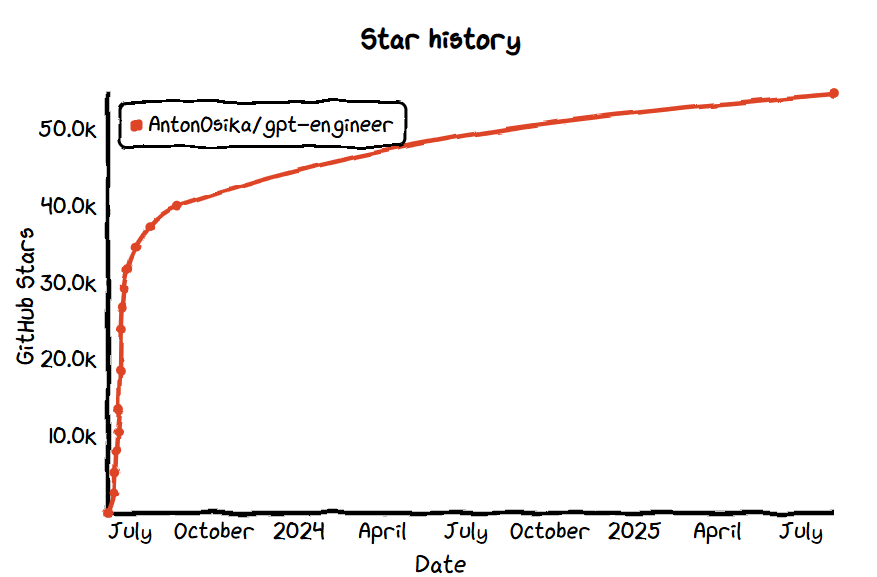
Overview:
gpt-engineer lets users describe project requirements in natural language and automatically generates complete code structures. By collecting requirements via conversation, it uses an LLM to generate files, modules, and code—an important exploration into “AI-assisted programming.”
Key Features:
- Requirement Gathering via Prompts: Captures project goals and structure interactively.
- Automatic Code Generation: Produces both directory structures and implementation.
- Customizable Prompting Style: Allows configuring code language, frameworks, and tone.
- Iterative Refinement Loop: Supports debugging and iterative improvements.
Use Cases:
- Quick Project Bootstrapping: Great for hackathons or new app scaffolding.
- AI Coding Assistant Research: Studies how AI interprets development intent.
- Educational Tool: Helps learners understand full-project architecture.
No.19: ChatGPT
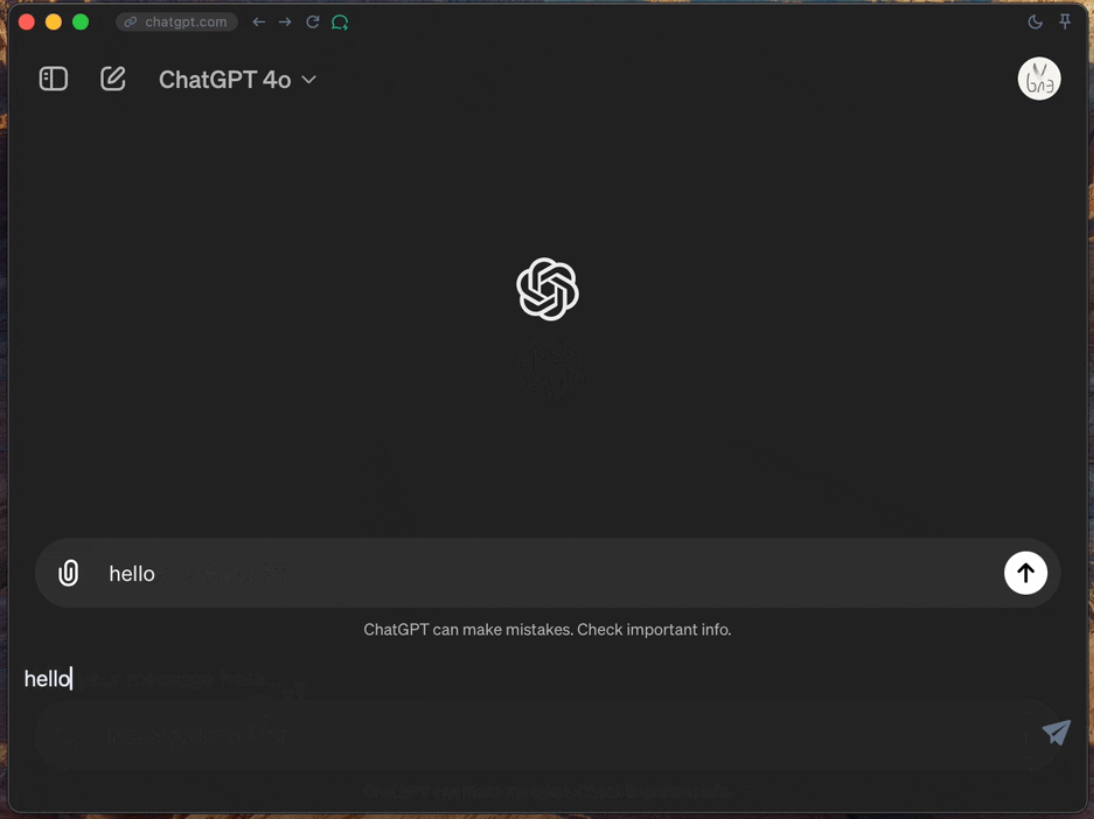
GitHub Star: 53.9k
GitHub: https://github.com/lencx/ChatGPT
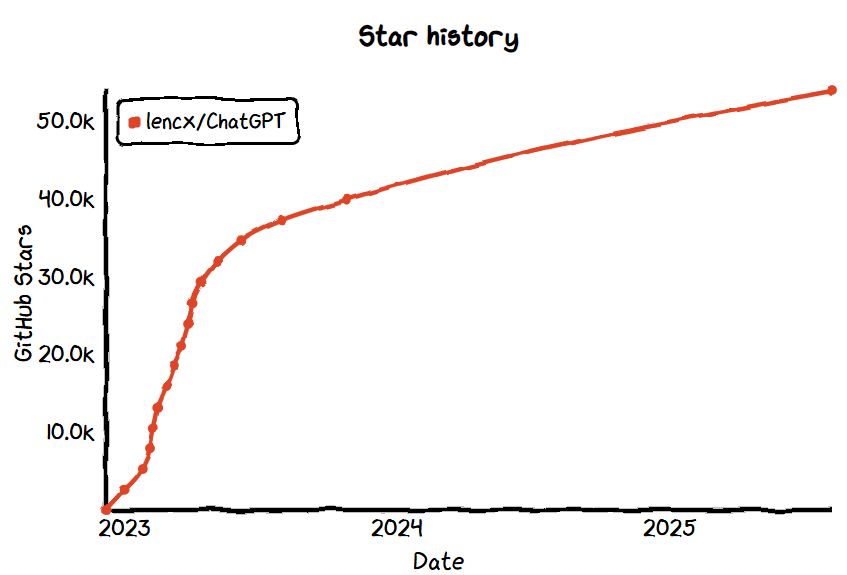
Overview:
ChatGPT is a cross-platform open-source desktop client developed by lencx. It brings a native experience for using OpenAI’s ChatGPT on Windows, macOS, and Linux. Lightweight and elegant, it supports multiple accounts and is a top choice for users of OpenAI APIs.
Key Features:
- Cross-Platform Native App: Built with Tauri for minimal resource use.
- Multi-Account Support: Easily switch between different API keys.
- Markdown, Code Highlighting & Local Storage: Retain chat history with formatting.
Use Cases:
- Developer AI Assistant: Quickly query ChatGPT for dev tasks.
- Personal Knowledge Management: Store chats in Markdown for later reference.
- Teaching & Demos: Great for showcasing ChatGPT functionality or API testing.
No.20: Meilisearch
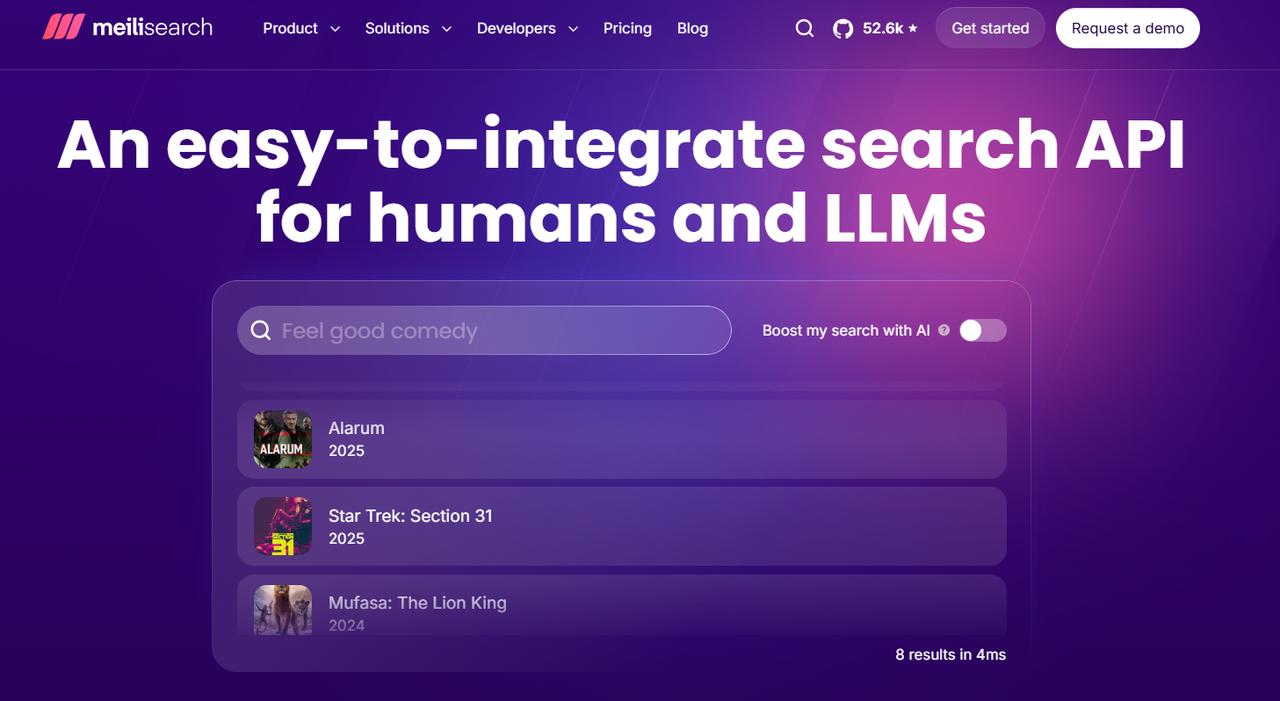
GitHub Star: 52.6k
GitHub: https://github.com/meilisearch/meilisearch
Website: https://www.meilisearch.com/
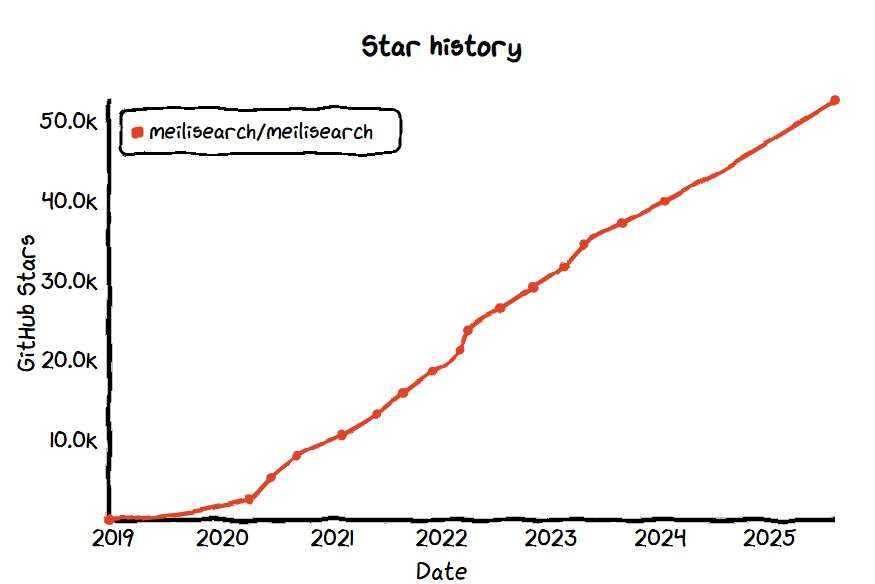
Overview:
Meilisearch is an open-source, lightning-fast search engine designed for modern web applications. It delivers real-time search features like autocomplete and typo tolerance and is easy to deploy and configure—making it a great Elasticsearch alternative for startups and small projects.
Key Features:
- High-Performance Natural Language Search: Supports fuzzy matching, prefix searching, and result ranking.
- Simple Setup & API Usage: Deploys in minutes with RESTful APIs.
- Multilingual Support & Custom Dictionaries: Suitable for global apps.
Use Cases:
- Website Search Integration: Add search to blogs, e-commerce, or docs sites.
- Embedded SaaS Search Modules: Improve in-app search experience.
- Smart Document/Knowledge Search: Combine with RAG to power AI Q&A systems.
Final Thoughts
We hope this article provides practical guidance in selecting and using open-source AI tools. If you found it helpful, feel free to share it with fellow developers who are also passionate about AI!
⭐ We’ll continue to follow high-quality projects and explore more ideas and possibilities together!
Related reading:
- Top 8 Open Source MCP Projects with the Most GitHub Stars
- Top 7 Open Source Web Applications with the Most GitHub Stars
- Top 40 Open-source Developer Tools with the Most GitHub Stars
- Top 15 Fastest-Growing Open-Source Low-Code Projects on GitHub in 2025
- Top 11 Open-source CRM Projects with the Most GitHub Stars
- Top 11 Open-Source Admin Dashboard Projects on GitHub
